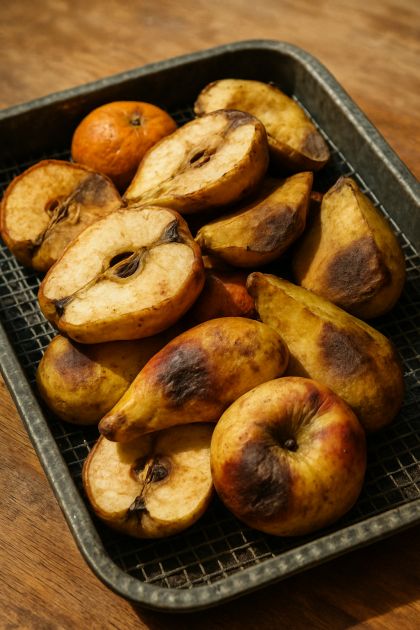We’ve all been there: you open the fridge and discover some forgotten fruit, looking a bit worse for wear. The initial instinct might be to throw it away, but then comes the voice of frugality, often embodied by a well-meaning mother-in-law, suggesting that it’s wasteful not to use it. This common household dilemma raises questions about food waste, safety, and creativity in the kitchen.
In this article, we’ll explore the various aspects of dealing with old fruit, from assessing its condition to understanding the risks and benefits of using it. We’ll also delve into creative ways to repurpose overripe fruit, the importance of food safety, and the environmental impact of food waste. By the end, you’ll have a comprehensive understanding of how to handle this situation with confidence.
1. Assessing the Condition of the Fruit
Before deciding whether to use or discard old fruit, it’s crucial to assess its condition. Start by examining the fruit’s appearance: is it bruised, moldy, or discolored? A small bruise might be harmless, but mold is a clear sign that the fruit is no longer safe to eat. Check for any unusual smells; fresh fruit should have a pleasant aroma, while a sour or fermented smell indicates spoilage.
Next, consider the texture. Overripe fruit may feel softer than usual, but if it’s mushy or leaking liquid, it’s best to discard it. For fruits like bananas or avocados, a bit of browning is normal and can still be used in recipes like smoothies or baked goods. However, if the fruit has shriveled significantly or has a slimy texture, it’s time to let it go.
2. Understanding the Risks of Consuming Old Fruit
Consuming old fruit can pose health risks, particularly if the fruit is moldy or has begun to ferment. Mold can produce mycotoxins, which are harmful compounds that can cause allergic reactions or respiratory issues. While not all molds are dangerous, it’s better to err on the side of caution and avoid consuming moldy fruit.
Fermented fruit can contain alcohol, which might not be suitable for everyone, especially children or those with certain health conditions. Additionally, bacteria can grow on fruit that has been stored improperly or for too long, leading to foodborne illnesses. It’s essential to be aware of these risks and prioritize safety when deciding whether to use old fruit.
3. The Importance of Food Safety
Food safety should always be a top priority when handling perishable items like fruit. The USDA recommends storing fruit at temperatures below 40°F (4°C) to slow the growth of bacteria and mold. It’s also important to wash fruit thoroughly before consumption, even if you plan to peel it, as bacteria can transfer from the skin to the flesh.
When in doubt, remember the adage: ‘When in doubt, throw it out.’ It’s better to waste a small amount of food than to risk your health. Keeping your kitchen clean and organized can also help prevent food from going bad in the first place, reducing the need to make these tough decisions.
4. Creative Ways to Use Overripe Fruit
If the fruit is still safe to eat but not in its prime condition, there are plenty of creative ways to use it. Overripe bananas, for example, are perfect for banana bread or smoothies. Apples that have softened can be cooked down into applesauce or used in pies.
Citrus fruits that are past their prime can be juiced and frozen in ice cube trays for later use in drinks or recipes. Berries can be turned into jams or compotes, while stone fruits like peaches and plums can be baked into crisps or cobblers. By thinking outside the box, you can reduce waste and enjoy delicious treats.
5. When to Trust Your Senses
Your senses are powerful tools in determining the edibility of food. Sight, smell, and touch can all provide valuable information about the condition of fruit. If something looks off, smells bad, or feels wrong, it’s best to trust your instincts and avoid consuming it.
However, it’s also important to recognize that some changes in fruit are natural and not necessarily harmful. For example, browning in bananas or avocados is a natural oxidation process and doesn’t mean the fruit is spoiled. Learning to distinguish between harmless changes and signs of spoilage can help you make informed decisions.
SEE NEXT PAGE
ADVERTISEMENT
ADVERTISEMENT

